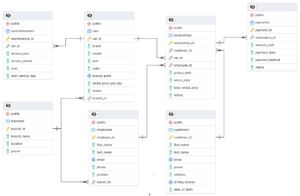PostgreSQL Tutorial

PostgreSQL is one of the most popular, reliable, and feature-rich open-source relational database management systems (RDBMS). With high flexibility and strong support for SQL standards, PostgreSQL is widely used by developers, enterprises, and organizations worldwide.
This tutorial will guide you through PostgreSQL in depth, covering everything from installation and basic configuration to performance optimization for better database efficiency. It will be categorized the topics into priority levels based on learning progression:
Priority 1: Essential Foundations (Beginner-Level)
These topics will help beginners get started with PostgreSQL and understand the basics.
✅ Getting Started
1. Introduction to PostgreSQL: Features and Benefits
2. How to Install PostgreSQL on Linux (Ubuntu)
3. How to Install PostgreSQL on Windows
4. Setting Up PostgreSQL on Docker
5. Understanding PostgreSQL Architecture
✅ Basic PostgreSQL Commands
6. Connecting to PostgreSQL Using psql
7. Creating and Managing Databases in PostgreSQL
8. Creating and Managing Users and Roles in PostgreSQL
9. How to Create Tables in PostgreSQL
10. Inserting, Updating, and Deleting Data in PostgreSQL
11. Basic SELECT Queries in PostgreSQL
12. Using WHERE, ORDER BY, and LIMIT in PostgreSQL Queries
Priority 2: Intermediate-Level Topics (Practical SQL & Querying)
These topics cover advanced SQL operations and data manipulation techniques.
✅ Advanced SQL Queries
13. Understanding Joins in PostgreSQL: INNER, LEFT, RIGHT, FULL
14. Using Aggregate Functions (COUNT, SUM, AVG, MIN, MAX) in PostgreSQL
15. Using Subqueries in PostgreSQL
16. Working with Common Table Expressions (CTEs) in PostgreSQL
17. Window Functions in PostgreSQL
18. Using JSON and JSONB in PostgreSQL
✅ Performance Optimization
19. How to Optimize Queries in PostgreSQL
20. Understanding and Using Indexes in PostgreSQL
21. How to Analyze and Explain Queries in PostgreSQL
22. PostgreSQL Vacuum and Autovacuum Explained
23. Partitioning in PostgreSQL for Large Datasets
Priority 3: Advanced Administration & Security
Topics related to backup, security, and database maintenance.
✅ Backup & Security
24. How to Backup and Restore PostgreSQL Databases
25. Setting Up User Authentication and Permissions in PostgreSQL
26. How to Encrypt Data in PostgreSQL
27. PostgreSQL SSL Setup for Secure Connections
28. Setting Up Replication in PostgreSQL
✅ PostgreSQL Administration
34. Managing PostgreSQL Logs for Troubleshooting
35. How to Configure PostgreSQL for High Availability
36. Setting Up Connection Pooling in PostgreSQL
37. Understanding PostgreSQL Configuration Parameters
Priority 4: Development & Integrations
These topics will help developers integrate PostgreSQL with different programming languages and frameworks.
✅ PostgreSQL Development & Integrations
29. How to Use PostgreSQL with Python (psycopg2)
30. How to Use PostgreSQL with Node.js
31. How to Use PostgreSQL with PHP
32. How to Use PostgreSQL with Java and JDBC
33. Using PostgreSQL with Django
Implementation Plan
1️⃣ Start with Priority 1 topics to build a strong foundation.
2️⃣ Move to Priority 2 for practical SQL queries and performance tuning.
3️⃣ Cover Priority 3 for security and database management.
4️⃣ Finally, explore Priority 4 for development and integrations.
